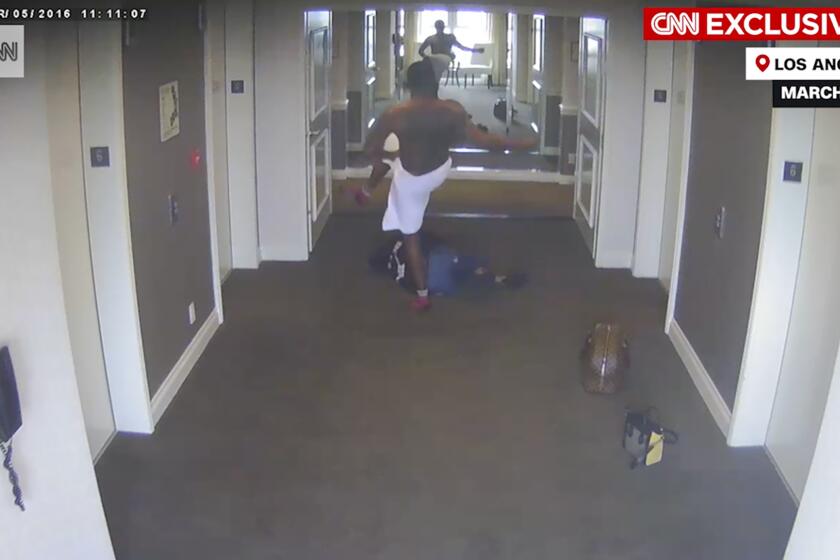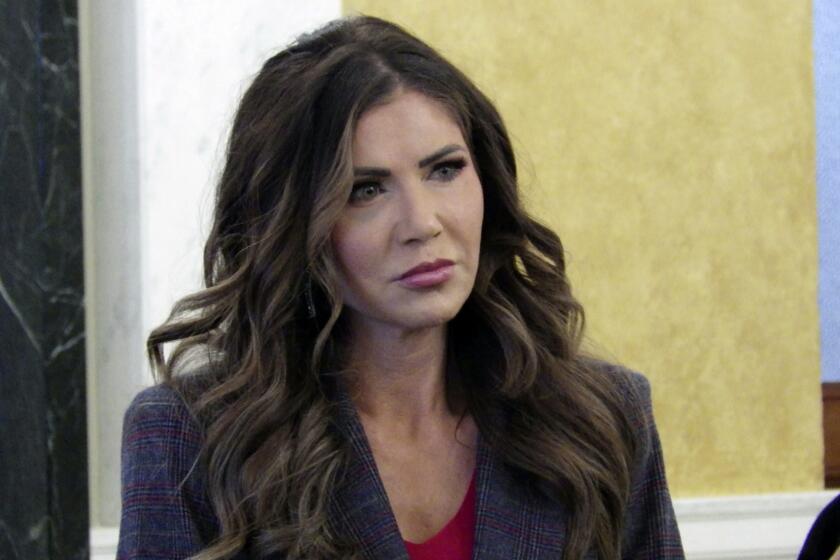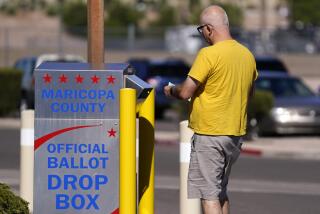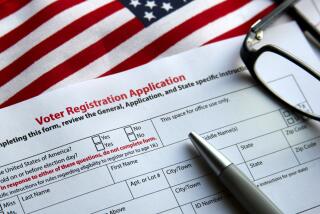Column: Why are Republicans making it harder for some people to vote? It’s not just partisanship
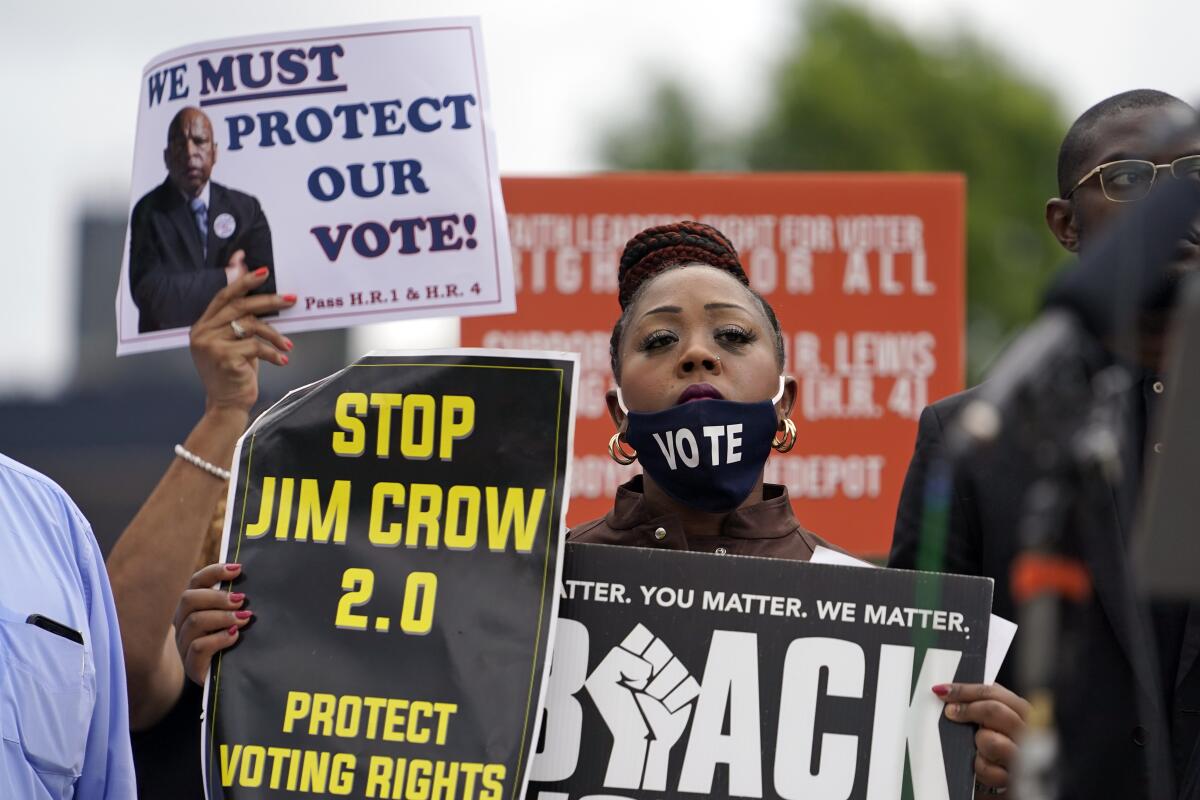
Of all the modern Supreme Court’s incredibly disappointing rulings, gutting the Voting Rights Act of 1965 is near the top, second only to its catastrophic decision to rip away half a century of reproductive rights from American women.
Until the court’s shocking 2013 Shelby County vs. Holder decision, states and counties with histories of racial discrimination were required to get approval from the Justice Department — known as “preclearance” — for redistricting or changes to voting laws. The conservative members of the Supreme Court changed all that with a 5-4 decision.
“There is no denying,” Chief Justice John G. Roberts Jr. wrote, “that the conditions that originally justified these measures no longer characterize voting in the covered jurisdictions.”
That’s because these measures were working, sir.
The music mogul issued an apology only after some of singer Cassie Ventura’s allegations were substantiated by security footage from a Los Angeles hotel.
As the director of the Brennan Center for Justice’s Voting Rights Program, Sean Morales-Doyle, reminded me last week, Justice Ruth Bader Ginsburg acidly noted in her dissent that “throwing out preclearance when it has worked and is continuing to work to stop discriminatory changes is like throwing away your umbrella in a rainstorm because you are not getting wet.”
These days, thanks to our misguided court, it’s raining voter suppression laws.
The Brennan Center has found that at least 29 states have passed 94 restrictive voting laws, only a few of which have been blocked by courts or repealed. Freed from federal oversight, states such as Georgia, Alabama, Texas, Mississippi and South Carolina have gone to town, enacting dozens of new restrictions in a cynical effort to make it more difficult for Black, brown and Indigenous voters and college students, all of whom lean Democratic, to cast ballots.
A handy primer on the issue is the 30-minute documentary “Suppressed and Sabotaged,” by Brave New Films. Released in 2022 and re-released this year, the documentary examines the different ways Republican states have attempted to disenfranchise voters they don’t like. I recommend taking your blood pressure medication before viewing it.
To be as tough as the guys, Republicans Kristi Noem shot her dog, Joni Ernst castrated hogs, Sarah Palin advocated shooting wolves from the air.
The techniques include reducing the number of polling places in Black precincts, erecting barriers to voter registration, wantonly purging voter rolls, changing the rules for absentee ballots, slashing the number of drop boxes and passing voter ID laws with the pretext of preventing voter fraud, a rare occurrence that MAGA Republicans have become hysterical about.
The documentary focuses on the 2018 Georgia gubernatorial election, which is considered by some voting rights activists to be the proving ground for many of the voter suppression techniques that would later be adopted by other states.
In that race, then-Georgia lawmaker Stacey Abrams came very close to beating Republican Secretary of State Brian Kemp and becoming the country’s first Black female governor. Kemp, who was running for governor while overseeing the election, conducted what many viewed as a reckless purge of the voter rolls. More than half a million people, around 8% of registered voters, were excised by Kemp in 2017. More than 100,000 of them were cut not because they died, moved or went to prison but because they had chosen not to vote in two previous elections.
Black voters encountered unique barriers in Georgia’s 2018 election. As Politico reported, they “waited for hours in lines that wrapped around their voting locations. Some were removed from the voter rolls arbitrarily, forcing them to fill out confusing provisional ballots on election day. Others stayed home altogether.”
Kemp won by fewer than 55,000 votes, or 1.4% of the total votes cast.
Abrams supporter Peggy Xu, now a 28-year-old attorney in Washington, D.C., was among the tens of thousands of Georgia voters who never received the absentee ballots they requested that year. As a student, she had voted absentee in Georgia for years without any trouble.
“I requested the absentee ballot very early, as soon as I knew I was moving,” she told me. “I checked my mailbox every day. It became this horrible ritual.” She was hopeful, then anxious, then demoralized. The ballot never came, and she never discovered why.
“It sowed distrust in me,” she said. “This upcoming election in 2024 is astronomically important. Maybe I should eat the cost and fly back and vote in person?”
The Brennan Center made a fascinating discovery when it analyzed exactly where these restrictive voting laws were concentrated. It’s too simple to say voter suppression laws spring solely from naked Republican partisanship. They also arise from racial animus.
“White racial resentment — and not just party and competitiveness alone — goes a long way toward explaining the phenomenon,” Kevin Morris, a Brennan Center voting policy scholar, wrote in his 2022 report.
As Morales-Doyle put it: “Legislators who represent the whitest districts in the most diverse states are the most likely to introduce restrictive legislation. This is consistent with the idea of ‘racial threat,’ of people responding to the growing political power of communities of color in these places.”
“White racial resentment,” it’s worth noting, is a metric developed in the 1980s by political scientists Donald Kinder and Lynn M. Sanders for the American National Election Studies. The regular national surveys ask respondents whether and how much they attribute socioeconomic disparities between Black and white Americans to slavery and racial discrimination or to a lack of hard work and perseverance. “The more an individual agrees with the general sentiment that Black people’s lack of effort is the primary reason for racial disparities, the higher that individual’s racial resentment score,” wrote the Brennan Center’s Theodore Johnson. “And study after study has shown that people who voted for Donald Trump had higher levels of racial resentment than those who did not.”
Until about 2008, white Republicans and Democrats demonstrated similar rates of racial resentment. But after the election of the first Black president, those rates diverged dramatically. Racial resentment levels among white Democrats plunged, and they rose among white Republicans.
On Thursday, the Supreme Court struck again, ruling that South Carolina could keep using a congressional map that, according to a lower court, unconstitutionally shifts tens of thousands of Black voters to a different district to favor Republicans.
Not all the news is bad, though, as Morales-Doyle pointed out. In 2022, many election deniers ran for office, including to serve as election officials, but none of those candidates prevailed in the battleground states.
“We still live in a democracy,” he said. “It has its flaws, but voters want people to have access to voting. That is my reason for hope.”
More to Read
A cure for the common opinion
Get thought-provoking perspectives with our weekly newsletter.
You may occasionally receive promotional content from the Los Angeles Times.
